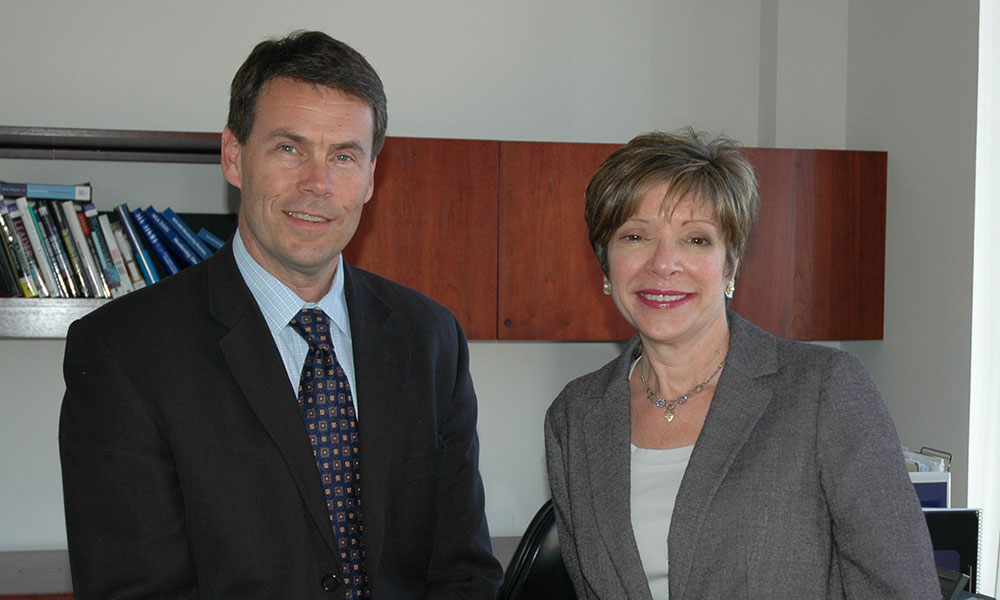
Inside a Co-CEO Relationship
For the co-EVPs at the American Gastroenterological Association, shared leadership has its benefits---so long as you start with trust.
Last week I wrote about co-CEO structures, in which the management of an organization is spread out among two or even three leaders. It’s a rare model to start with—it tends to break down for power-imbalance reasons—and I wrote that I couldn’t find an association that was using it. Admittedly, I was fishing a little in saying that, hoping that a co-CEO or two in the association community might see the piece and speak up.
Found one—er, two.
Since 2010 the American Gastroenterological Association has had two people at the top: co-executive vice presidents Lynn P. Robinson and Thomas J. Serena. Their partnership is successful, and their experience got me thinking about ways associations can improve not just how they think about the CEO role, but the leadership pipelines they’ve established for their organizations.
The board had gotten to know both of us and came to see us as equally valuable.
That’s the good news. The bad news is that Robinson and Serena’s working relationship is exceedingly difficult, perhaps impossible, to replicate.
Part of the reason for that is that the “since 2010” bit is a little deceptive. Though they’ve shared the job for less than three years, they’ve worked together at AGA for nearly two decades, joining the association around the same time in June 1994. They’ve each had different roles at the organization over the years—Robinson most recently as chief counsel, Serena as COO—but both had long been perceived as right hands to AGA’s previous CEO.
“We’ve been working side by side as a management team for many years, and we’d been attending all the board meetings,” says Robinson. “The board had gotten to know both of us and came to see us as equally valuable. I think they felt very concerned [during the CEO search] that choosing either one or the other of us would lead to the other person leaving. And they had so much trust in us that they didn’t want to go outside.”
When the board began considering a co-CEO arrangement, they looked for examples of them in the association community and came up empty. So while Robinson and Serena had a good working relationship—“It’s almost muscle memory at this point,” Serena says—they worked together with a coach to discuss trust issues and other ego-related stuff that can undo power-sharing arrangements. Today they schedule weekly check-ins in addition to more informal interactions, but they know the coach is available too. “We could absolutely get a tune-up if we needed to,” Robinson says.
Beyond honing soft skills, the two have also worked to make clear which of them bear direct responsibility for which departments. “We divided the organization so that I have day-to-day responsibilities for departments A through C, and Lynn has D through F,” Serena says. “So on a day-to-day basis, people are pretty clear about where to go.” (The two also retain previous job roles: Robinson remains general counsel, and Serena is CFO. “[The board is] getting two people doing three jobs,” Robinson says.)
The advantage of this arrangement, they say, is that they can play to their strengths instead of feeling like they have to manage every element of the association. And if there’s a personality clash with a board president—well, there’s another personality in a position of authority who can step in. “There are two sets of personalities here, and if the president clicks with one and not the other, Lynn and I look at that as an advantage,” Serena says.
Listening to Serena and Robinson talk—they’ve acquired that finish-each-other’s sentences banter that longtime friends and couples do—I wondered if associations shouldn’t spend more time cultivating symbiotic relationships like this one. Forward-thinking associations have CEO succession plans, and may even cultivate multiple candidates who can be a serious contender for the top slot. But I suspect that each person is considered in isolation: “X knows the numbers backwards and forwards”; “Y is the kind of person who’ll smash through brick walls to meet our mission”; “Z has a great vision for going global.” But what if Y and Z work really well together? How do you keep them on the same page, and tailor their jobs to take advantage of that? Doing it may improve how your organization works even if it turns out you don’t go the multiple-CEO route when the time comes.
And Robinson stresses that the multiple-CEO arrangement may be a tough road. “I think it could be very tricky if you didn’t have the kind of relationship Tom and I have,” she says. “If both came in from scratch and didn’t know each other and haven’t worked together, it would be very difficult to maintain, I believe. Because we’ve grown up together in this organization, we have a unique history. If that didn’t exist, we would have to do a lot of coaching and a continuous process for building trust.”
Thomas J. Serena and Lynn P. Robinson of the American Gastroenterological Association. (Handout photo)






Comments